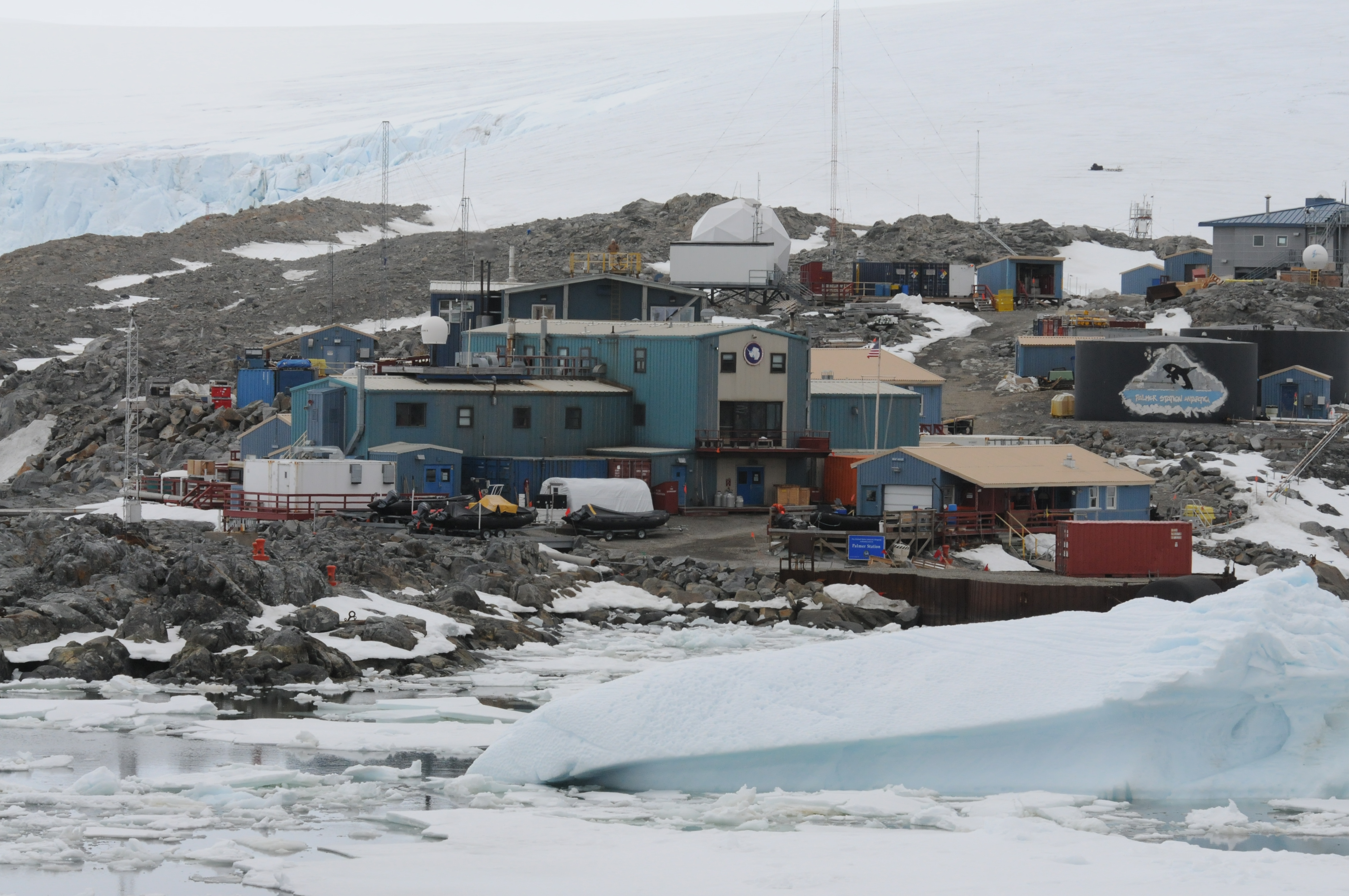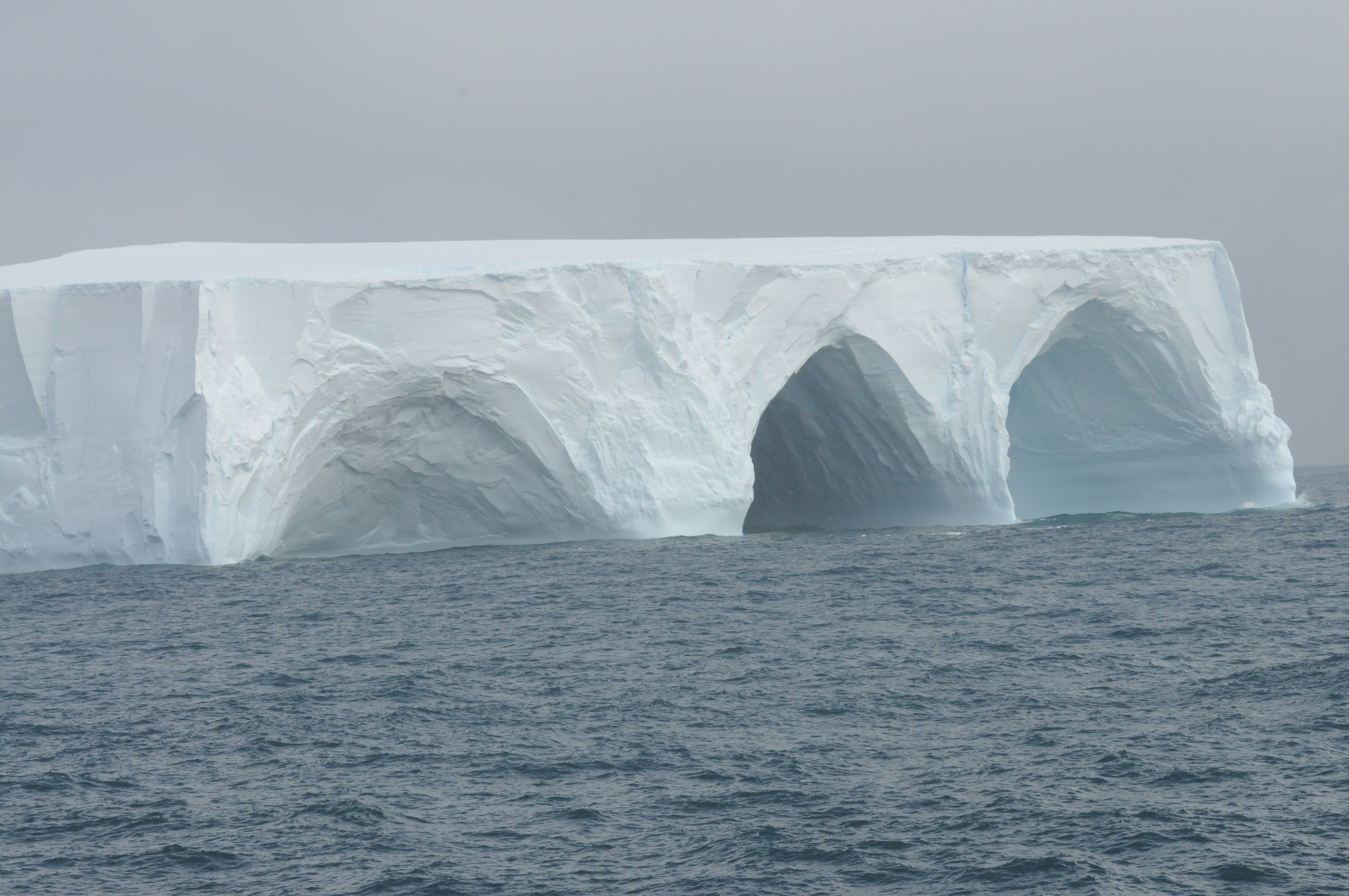Erin Pickett @ Palmer Station
Here at Palmer, we have expensive acoustic equipment that allows us to see down a hundred meters or so to the bottom of the ocean. If krill or small fish (or the occasional penguin) are beneath us, they’ll show up on our computer screen as fuzzy looking colorful patches suspended in space (or along the seafloor). This technology is kind of analogous to the weather stations we have around Palmer. We look at a computer screen or in this case, turn our marine radios to the ‘weather station’, and we get the wind speed, wind direction, temperature, humidity and air pressure all by pressing one button. So we know where we are by looking at our GPS, we know where the krill is thanks to our fishfinder, and we know what the weather is doing thanks to real-time updates on our radios.
Yesterday morning while Logan and I were taking our first few sips of coffee and looking at the latest weather forecast that is conveniently waiting in our inboxes every morning, there was a man standing on the shoreline by our boat dock. He happened to be one of my graduate advisors, and one of the most senior scientists here at Palmer Station, Bill Fraser. Bill has been studying the environment here for more than twenty seasons, since before most digital technologies. Bill was observing krill along the water’s edge. This was notable, because we have not recorded significant amounts of krill in the vicinity of Palmer Station this season.
Bill mentioned to Logan that the whales might finally arrive today.
Any great field biologist, fisherman, or surfer knows the value of constantly observing the weather, the waves and the sky to know what to expect out of the day. If we are lucky enough, we are able to do this across seasons and years and we’ll even know what to expect from large-scale climate fluctuations like El Niño. Most surfers on the west coast and Hawaii knew the winter surf season would be epic this year, just like many scientists along the Antarctic Peninsula knew it was going to be a big ice year.
Soon after Logan spoke to Bill, we got our gear together and about ten minutes after leaving station Logan spotted blows on the horizon. There were so many blows, so frequently, our first thought was that it might be a large group of killer whales. We hadn’t seen more than one or two humpbacks this month, and had never seen so many individuals at once this season at Palmer. As we approached we started seeing the tell-tale humped dorsal fins arching, and flukes raising above the water as the whales dove.
Logan and I spent the next three hours doing our best to collect biopsy samples and photographs (for photo identification) of each whale. There were nine animals in the vicinity of our boating limit and probably another handful too far away for us to get to. In the end, we collected biopsy samples from seven whales and lost our last bolt amongst a group of four animals travelling into the glare of the sun, out of our boating range as the swell and wind picked up. We attempted to use a handful of nearby Wilson’s storm petrels to guide us to the lost bolt as the birds are attracted to the tissue samples, but we did not find it.
Logan wrote a blog post earlier in the season describing our biopsy sampling procedure and what we will use these samples for: http://blogs.oregonstate.edu/ltercetaceans/2016/01/19/25-mm-sample-45-foot-whale/. In short, each 25mm long sample will allow us to conduct genetic, hormone, and dietary analyses to assess the health and status of this population of humpback whales.
After a full afternoon of whales, we returned to station exhausted and exhilarated. Over the next month, we will be continuing to search for whales and for krill on our fish finder. In addition to our sophisticated software and instruments, from here on out I’ll take a hint from Bill and use those good ‘ole analog methods i.e. I’ll remember to walk down to the shoreline and get a feel for the conditions.
(Research activities conducted under the National Marine Fisheries Service permit no. 14809-2)























































